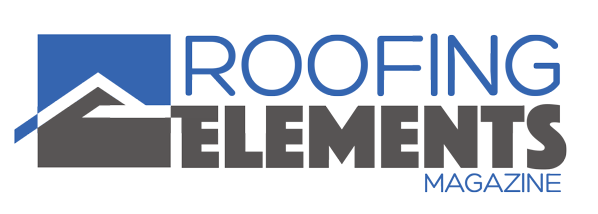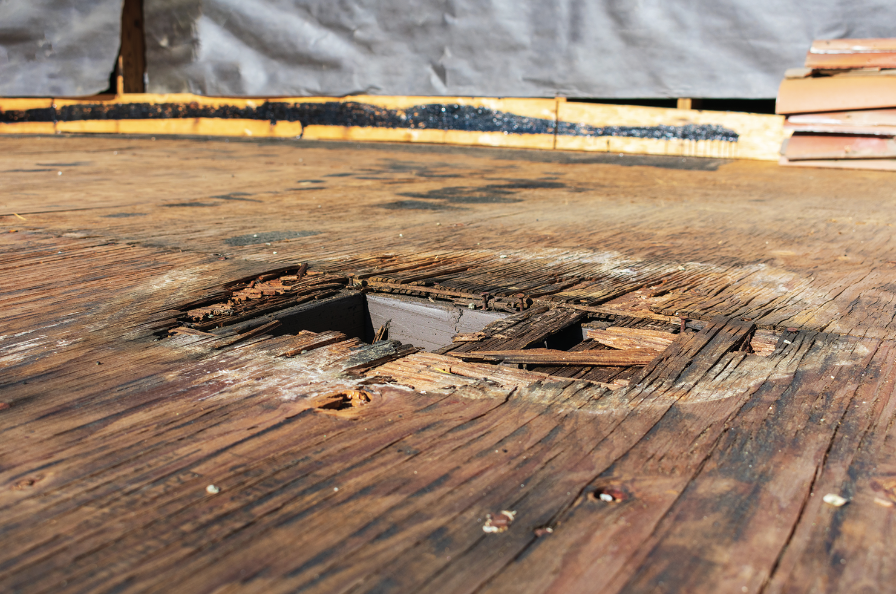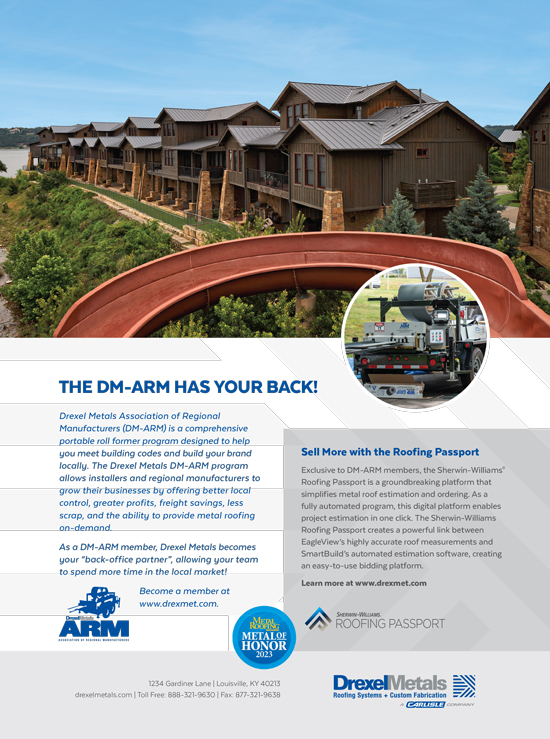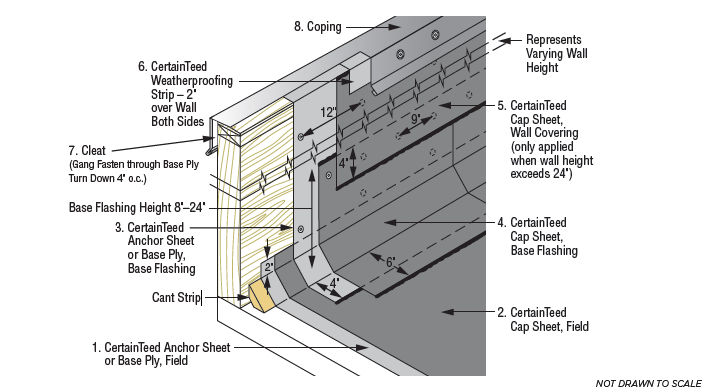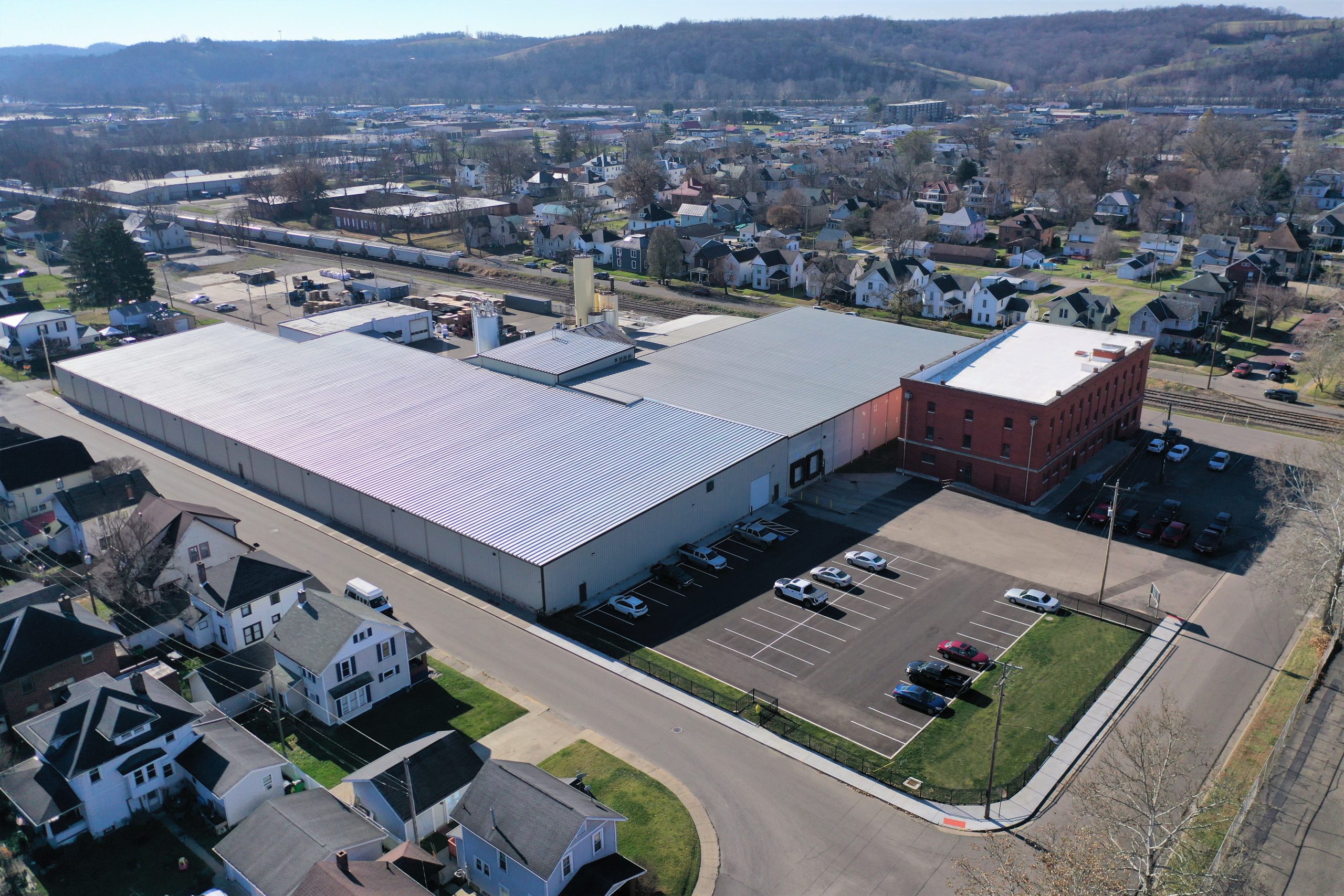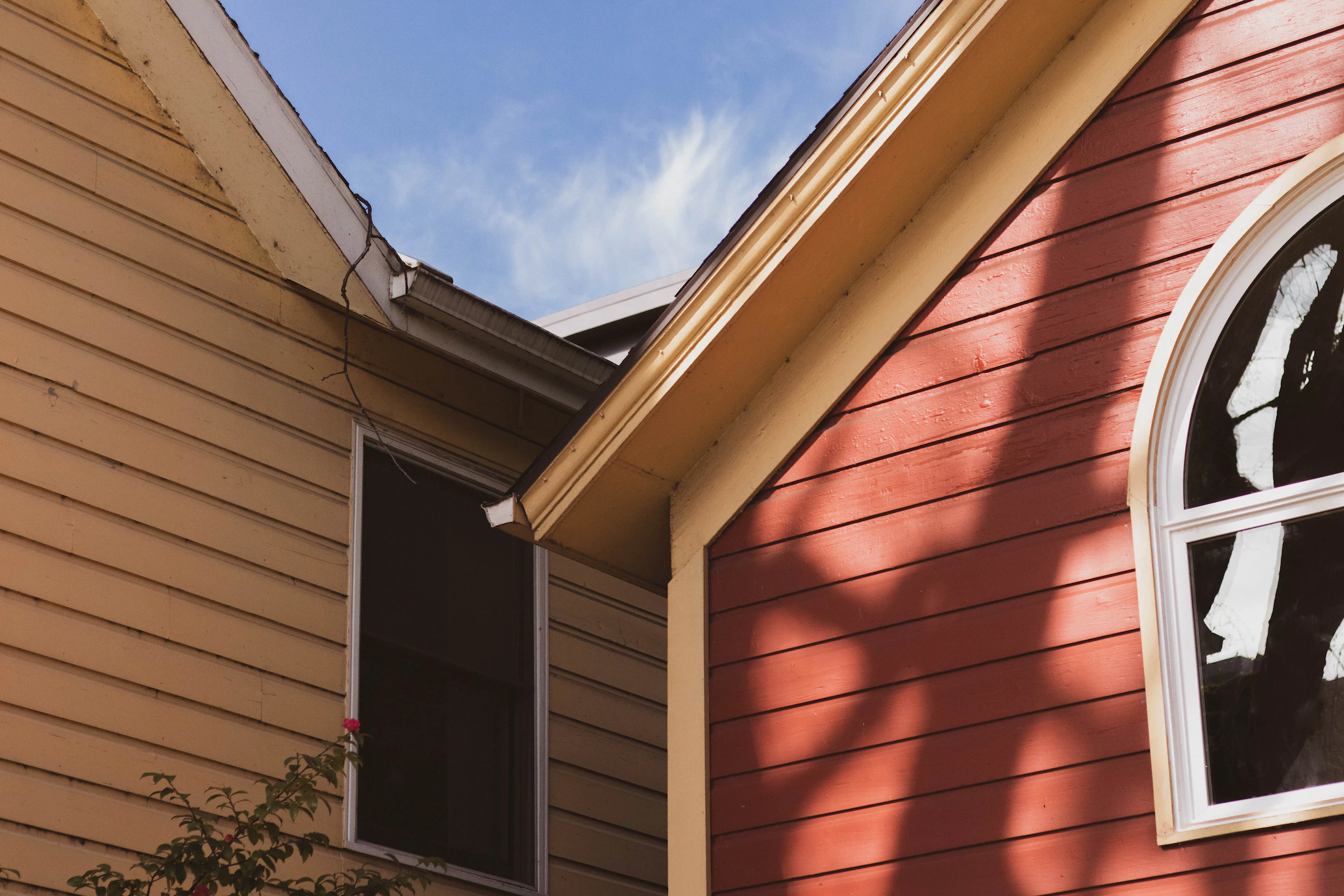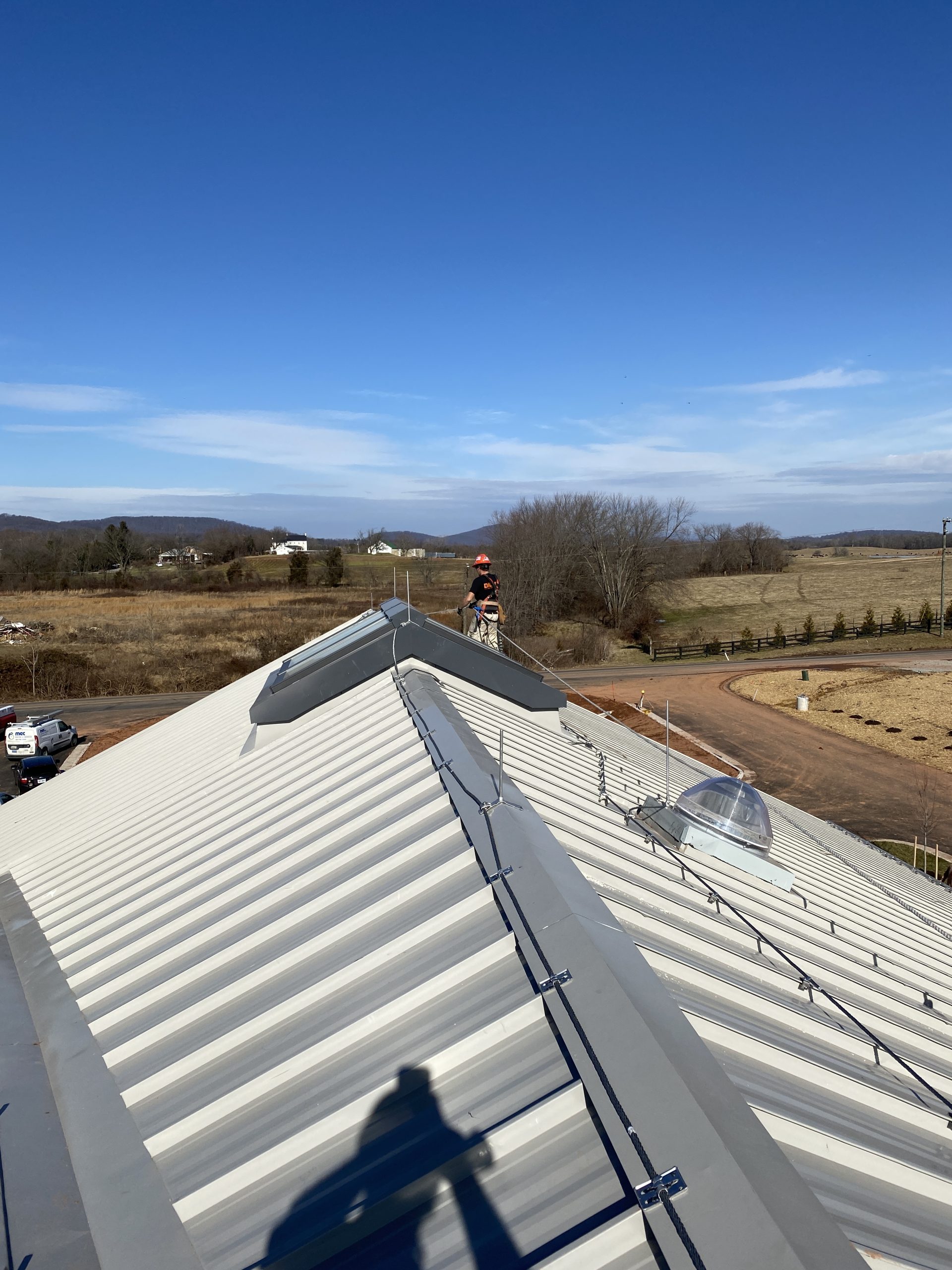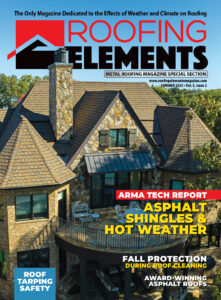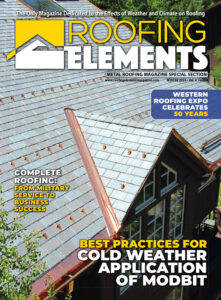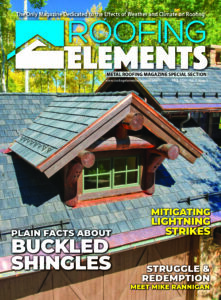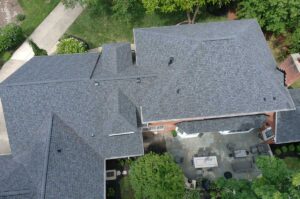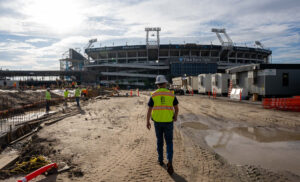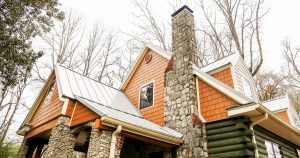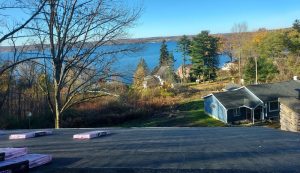By The Asphalt Roofing Manufacturers Association (ARMA)
Editor’s Note: The Asphalt Roofing Manufacturers Association (ARMA) has prepared many technical reports to aid roofers in the proper installation of various asphalt roofing systems. ARMA [https://www.asphaltroofing.org/] has granted permission to publish this report for the benefit of roofers.
Introduction
Moisture content within a roofing assembly may fluctuate significantly over the life of the roof depending on a variety of factors including, but not limited to moisture in the existing roof assembly at time of installation; interior and exterior temperatures; interior and exterior humidity conditions; deck type; under-deck ventilation; amount and location of insulation; and presence of vapor retarders/air barriers in the roof assembly.
The potential for condensation and moisture buildup in a membrane roof system from interior moisture sources has always been and should continue to be an issue that must be accounted for in the roof system design. Furthermore, the color, solar reflectance, and thermal emittance of the roof surface can affect a roof system’s drying potential and, therefore, the buildup of moisture in a roof system.
Moisture buildup in the roof assembly can result in deck deterioration, including rotting wood decks and corrosion of metal decks, growth of mold and other organisms, deterioration and reduction of the effectiveness of thermal insulation, premature failure and deterioration of the roof system, and re-emulsification of certain water-based adhesives.
Effects of Roof Color and Reflectance
The use of light color/reflective roofing is increasing, driven in part by requirements such as the California Building Standards Commission’s Title 24, LEED, and local code requirements across the U.S.
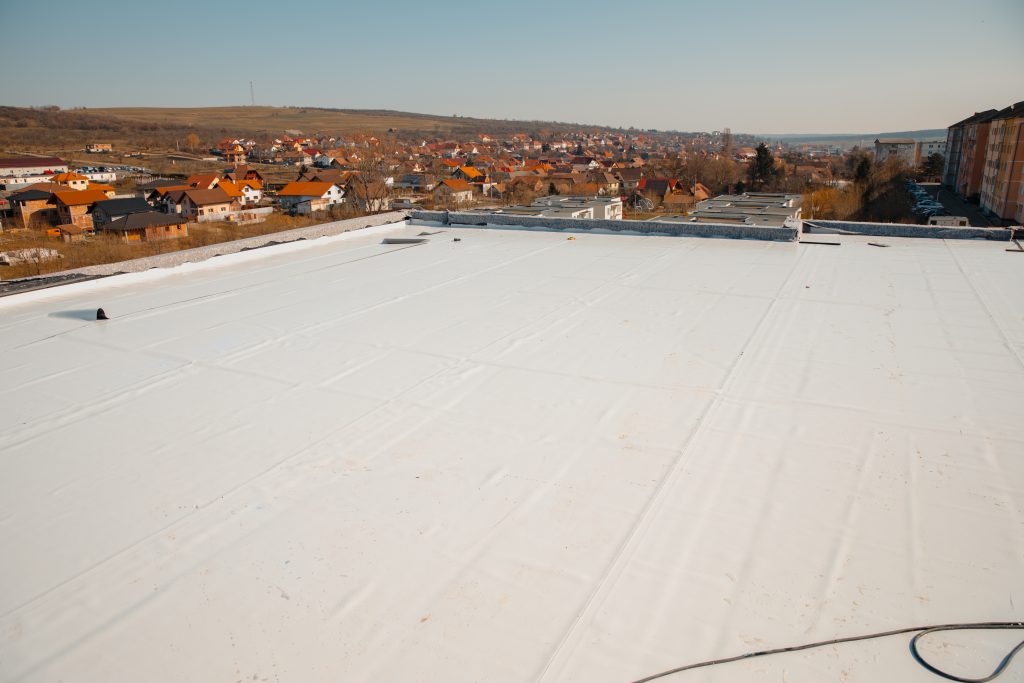
Changing the color of a roof membrane from a dark or non-reflective surface to a light color or highly reflective surface both reduces the amount of time the roof spends in a “drying” mode and the roof temperature when the roof is in a “drying” mode. When there is a source of interior humidity, a light colored or highly reflective roof surface can allow moisture and liquid water to build up in the roof assembly with less opportunity to evaporate or dry. Accumulation of moisture within roof systems can be exacerbated in buildings with elevated humidity or periods of excessive moisture generation and if often not addressed in the design of the building envelope. Some examples of moisture generators include:
• Apartment/condo buildings (showers, cooking, air humidifiers, etc., produce high levels of interior moisture)
• Swimming pools, food processing, paper mills, and foundries
• New construction with high interior construction moisture (i.e., from freshly poured concrete, space heaters, wet insulation installation, drywall installation, etc.)
• A compact ceiling assembly where there is typically drywall, batt insulation, roof deck and membrane with little or no insulation above the deck, no vapor retarder or air barrier in the system, and little or no ventilation below the deck
• Reroof conditions where moisture may be present in the existing system
Things to Consider
In new construction projects, the design professional must evaluate the anticipated interior and exterior conditions and design the proper water vapor control (including considerations for transfer of water vapor via diffusion and air flow). This evaluation should include the necessary calculations to ensure there will not be a condensation problem and a determination regarding whether a vapor retarder, air barrier, or underside roof deck ventilation is necessary. If adequate water vapor control measures cannot be integrated in the design, use of light colored or highly reflective roofing may create condensation issues.
Regarding tear-off, recover, and coating applications, a roofing professional should evaluate the existing roof assembly for signs of water infiltration and/or condensation issues (water stains, wet or deteriorated insulation, deck deterioration, organic growth). The professional should also determine whether there are interior vents (such as bathroom exhaust fans) and, if present, confirm that they are all properly ducted to the outside and in good condition so they do not allow moisture to enter the roof system. A roof design professional or climate control specialist should be consulted to evaluate the existing conditions and to develop a plan to address moisture issues within the existing roof assembly.
Some things that can be done to help control moisture accumulation in the roofing assembly include:
• Remove wet areas within the existing roof system prior to recovering the system with a new assembly
• Provide insulation above the deck to shift the location of the dew point
• Use at least two layers of insulation with staggered joints to prevent moisture migration through the joints between the insulation boards
• Use an adhered membrane system to minimize moisture migration within the roofing system
• Provide a vapor retarder and/or air barrier to the system at the proper location within the roof assembly and seal roof deck penetrations, terminations, and transitions
• Provide adequate ventilation below the deck to remove moisture before it enters the roofing system (always check with local codes to confirm below-deck venting requirements are met)
Always refer to roofing manufacturer published requirements and consider local building and energy code requirements. Consult a roofing professional when questions and decisions are to be made on condensation and refer to ASHRAE for design guides and standards. l
